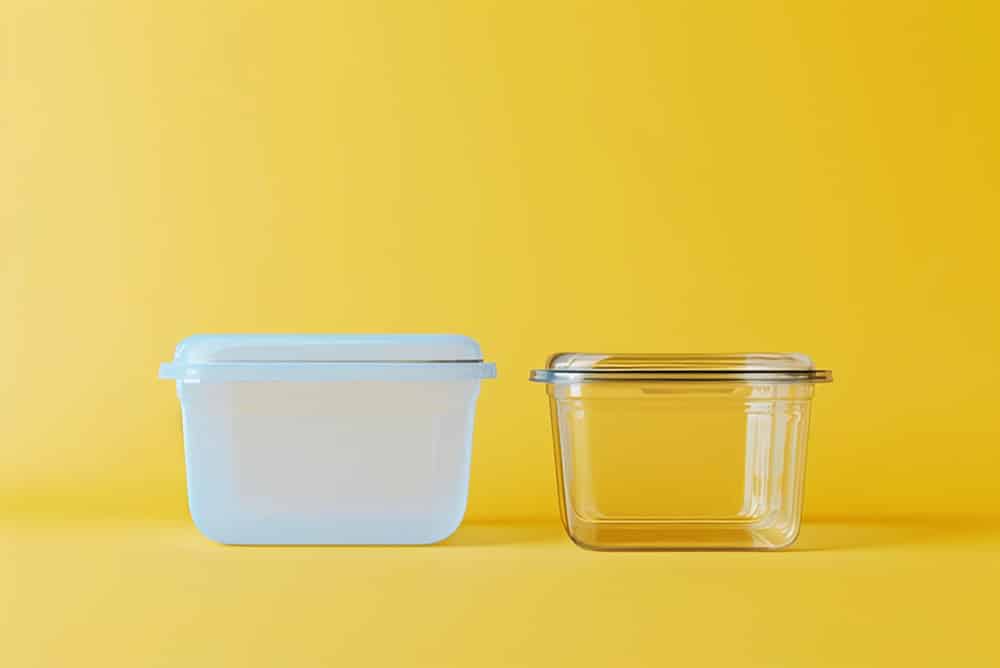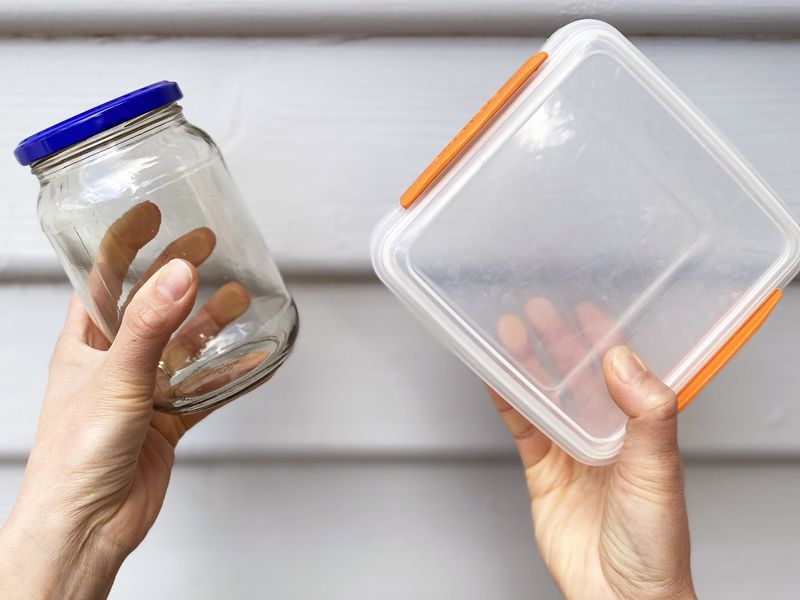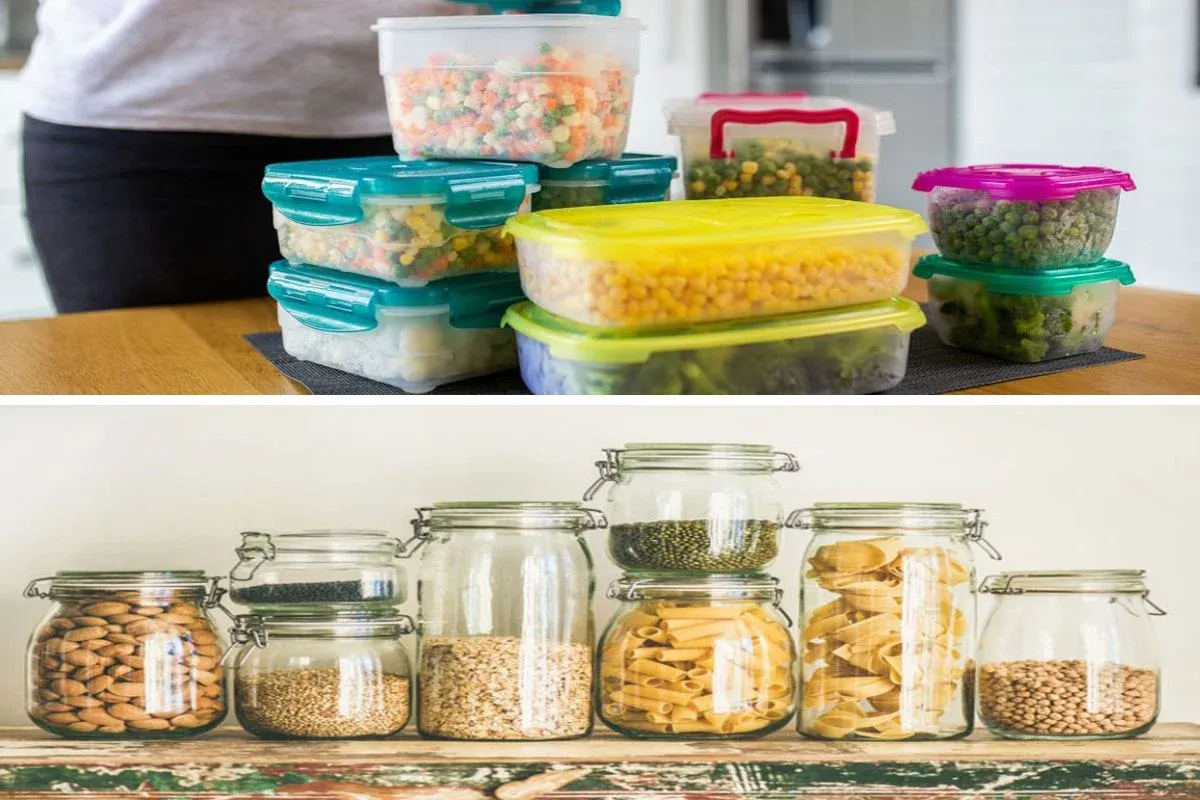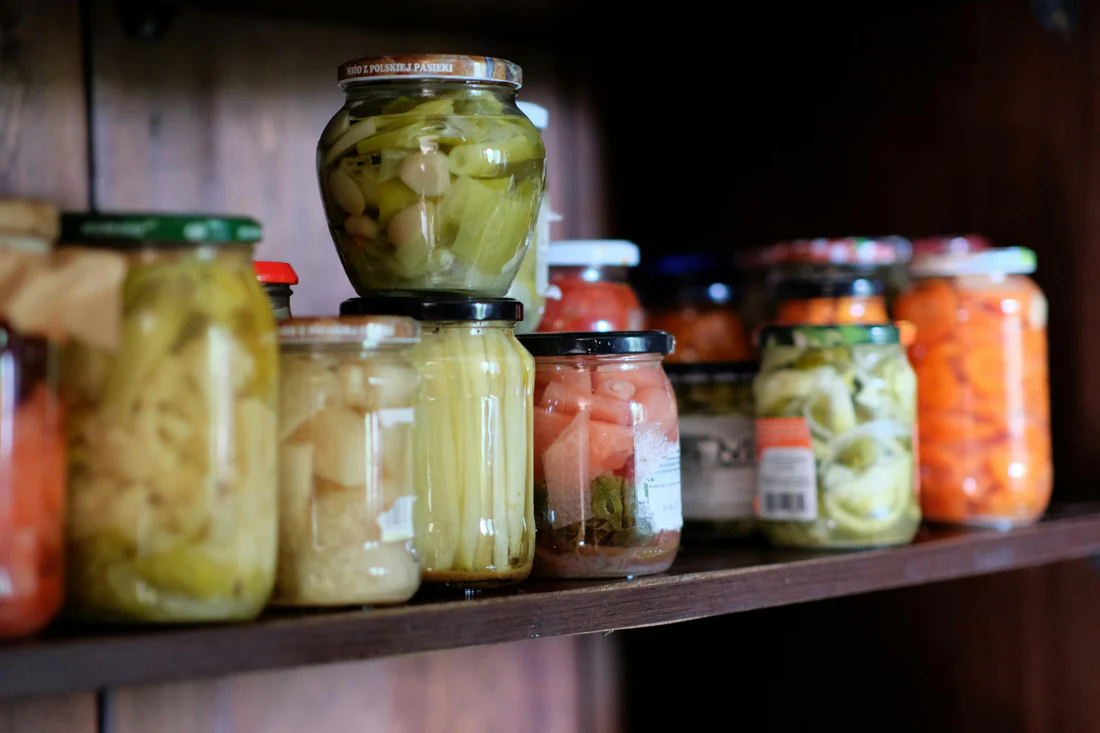Overview
Both plastic and glass food storage jars offer distinct advantages and drawbacks. Many people recommend glass for its food safety benefits, as it doesn’t contain chemicals like BPA, phthalates, or microplastics that can sometimes transfer into food—especially when heated. If avoiding chemical exposure is a priority, glass tends to be the clearer choice.
Glass is also known for its long-term durability. With reasonable care, glass jars can remain in excellent condition for years and typically show fewer scratches than plastic versions. Another major advantage is their heat resistance. Glass containers can safely go into the oven for reheating, baking, or roasting—something most plastic jars can’t handle. Plastic may warp or melt under high heat, raising concerns about chemical leaching.
That said, glass isn’t without its downsides. It’s generally heavier, more fragile, and often more expensive than plastic. A dropped Glass Jar can break, though durability tests have shown that many high-quality glass containers can survive a fall from counter height without shattering.
On the other hand, plastic jars are lightweight, affordable, and often easier to handle. They’re a practical option for packed lunches or busy households. Some well-designed plastic containers come with tight-sealing lids and silicone gaskets that work very well against leaks. Over time, however, plastic can develop scratches, hold onto odors, or become stained. Worn surfaces may also harbor bacteria in tiny cracks, which could compromise food safety.
Ultimately, a container’s performance depends as much on its design and quality as its material. Considering these key differences can help you decide whether glass or plastic best suits your product habits and needs.

Table of Contents
Health and Safety of Plastic vs Glass Food Storage Jars
The choice between plastic and glass food storage jars can have real health implications. While both have their uses, glass often comes out ahead when it comes to food safety. Here’s a closer look at the key factors.
Chemical Leaching and Material Safety
Glass is widely considered a safer option because it’s non-toxic and chemically inert. It doesn’t leach chemicals into food, even when exposed to heat or acidic ingredients. Plastic, on the other hand, may contain additives like BPA or phthalates, which can gradually migrate into food—especially when the container is heated, used with oily or acidic foods, or becomes scratched over time. For example, some PVC plastics contain high percentages of phthalates. Organizations like the FDA and Consumer Reports have highlighted these risks, confirming that glass remains free from such concerns.
Hygiene, Odor, and Stain Resistance
Thanks to its non-porous surface, glass doesn’t absorb food odors or stains. This makes it easier to clean and helps keep stored food tasting fresh. Plastic, however, tends to retain smells and discolor with use. Scratches or tiny cracks can develop on plastic surfaces, creating areas where bacteria may accumulate and raising hygiene issues over the long term.
Heat Resistance and Usage Safety
Glass containers are highly versatile: they’re microwave-safe, oven-safe, dishwasher-safe, and freezer-safe. They don’t degrade with repeated use and won’t release chemicals under high heat. Most plastic jars aren’t designed for high temperatures and can warp, melt, or potentially release chemicals when heated, making them less suitable for cooking or reheating.
Airtight Sealing and Freshness
Both glass and plastic jars can offer airtight seals, though glass containers with fitted lids are particularly effective at locking out air and moisture—helping food stay fresh longer. The quality of seals on plastic jars can vary, and wear over time may reduce their effectiveness, potentially compromising freshness and safety.
Conclusion
For those prioritizing health and safety, glass food storage jars are generally the better choice. They don’t leach chemicals, resist odors and stains, and perform well under heat. While plastic offers lightweight and shatter-resistant convenience, glass provides greater peace of mind for storing food safely over time.
|
Feature |
Glass Jars |
Plastic Containers |
|---|---|---|
|
Chemical Leaching Risk |
None |
Yes (BPA, phthalates, etc.) |
|
Odor/Stain Resistance |
Does not absorb |
Can absorb over time |
|
Heat/Cold Safety |
Oven/Microwave/Freezer safe |
Often not safe at high/low temps |
|
Durability Over Time |
Maintains nonporous surface |
Can develop cracks/scratches |
|
Food Freshness |
Excellent with airtight seals |
Variable, worsens as seals age |
Durability and Longevity: Plastic vs. Glass Food Storage Jars
When it comes to food storage, both plastic and glass jars have their advantages and limitations. Which material lasts longer often depends on how they’re used and handled.
Plastic Jars: Strengths and Limitations
Plastic jars are lightweight and resist breaking when dropped, making them a practical option for active households, families with children, or outdoor use. However, plastic tends to degrade over time—studies suggest some plastics can weaken significantly after several years of regular use. Exposure to high heat, such as in dishwashers or microwaves, can cause warping or brittleness. Additionally, plastic scratches easily and may become stained or retain odors, especially when storing oily or strongly flavored foods.
Glass Jars: Durability and Performance
Glass jars, particularly those made from borosilicate glass, offer strong heat resistance and can withstand repeated use at high temperatures. They maintain clarity over time and don’t scratch, stain, or absorb odors, even after many cleaning cycles. The main drawback is their fragility—glass is heavier than plastic and can break or chip if dropped. While quality glass often survives minor impacts, it requires careful handling to avoid damage.
Key Takeaways
Plastic works well where lightweight and shatter-resistant features are needed, though it may wear out faster. Glass offers superior long-term durability and performance, as long as it’s handled with care. For those prioritizing longevity and material stability, glass tends to be the more reliable option.

Versatility and Functionality of Plastic vs. Glass Food Storage Jars
When it comes to kitchen use, both glass and plastic food storage jars offer useful features, though which one works best often depends on your specific needs.
Glass Food Storage Jars: Multipurpose and Safe
Glass jars are highly versatile—suitable for prepping, cooking, storing, and even reheating food. They can safely go from the oven or microwave to the fridge or freezer without warping or releasing chemicals. Their non-porous surface prevents lingering odors and stains, so foods like garlic or tomato sauce won’t leave a permanent mark. Beyond the kitchen, glass jars are handy for organizing items, DIY projects, or even as simple decor due to their clean look and durability.
Plastic Food Storage Jars: Portable and Practical
Plastic jars stand out for their light weight and resistance to breaking, making them ideal for packed lunches, picnics, or families with young children. They’re generally more affordable and easy to carry. However, most aren’t oven-safe, and some may warp or release chemicals when microwaved—even if labeled as safe. Over time, plastic can absorb colors and odors, and scratches may develop that trap bacteria. They’re also less suited for non-food uses since they tend to look worn after repeated use.
Versatility Summary
Glass offers greater versatility for both cooking and storage, supporting a wide range of temperatures and uses inside and outside the kitchen. Plastic works well where portability and shatter-resistance are key, though it may not last as long or perform as reliably under heat. Your choice will likely depend on whether you prioritize multi-functionality and safety or lightweight convenience.
Choosing Between Glass and Plastic Jars: Understanding the Environmental Cost
When comparing the environmental impact of glass and plastic food jars, it’s important to look beyond common assumptions. Each material involves trade-offs at different stages of its life cycle.
Carbon Footprint and Manufacturing Impact
Glass jars generally have a higher initial carbon footprint than plastic. Producing a glass jar with a plastic lid emits around 2.81 kg of CO₂ in its first year, compared to 1.63 kg for a plastic jar. Glass manufacturing requires high-temperature furnaces that consume significant fossil fuels, and sourcing raw materials like sand can contribute to land degradation. Additionally, glass is much heavier than plastic—a one-liter glass jar can weigh up to 800 grams, while a similar plastic jar weighs only about 40 grams. This weight difference leads to higher fuel use and emissions during transportation.
Recyclability and End-of-Life Impact
Glass is infinitely recyclable without losing quality, and using recycled glass (cullet) reduces the energy needed to produce new jars. In contrast, only about 9% of plastic food containers are recycled. Most plastic is downcycled into lower-quality products that can’t be recycled again. The majority of plastic waste ends up in landfills or oceans, where it breaks down into microplastics and poses a long-term threat to ecosystems.
Resource Use and Long-Term Considerations
Glass is durable and designed for long-term use, which can reduce the need for frequent replacements. Plastic jars, however, are often used for shorter periods and disposed of more quickly, contributing to higher waste accumulation. While plastic has a lower initial carbon footprint, its end-of-life impact and low recyclability rate make its overall environmental effect more complex.
Environmental Choice: What Matters Most?
The better environmental choice depends on individual priorities and local infrastructure. Glass may be preferable where strong recycling systems exist, thanks to its recyclability and longevity. Plastic might seem better in terms of manufacturing and shipping emissions, but its persistence as waste remains a significant drawback. There’s no perfect material—the decision often comes down to whether you prioritize reusability and recycling or lower initial carbon emissions.

Cost and Availability of Plastic vs. Glass Food Storage Jars
Choosing between plastic and glass food storage jars often comes down to budget, intended use, and how long you expect them to last.
Price Comparison: Upfront Cost and Long-Term Value
Plastic jars are generally more affordable than glass, with multipacks helping to keep the cost per jar low. For example, a set of three plastic containers might sell for as little as $6.99. This makes plastic a practical choice for those needing plenty of storage without a big initial investment.
Glass jars usually come with a higher upfront price, especially designer brands or larger sizes. However, their durability and ability to last for years can make them more cost-effective over time. Many glass containers also offer upgraded lid options—such as bamboo or silicone—which can add to the cost but also enhance functionality and appearance.
Market Availability and Selection
Plastic containers are widely available, from supermarkets to discount stores, and come in a variety of shapes and sizes to suit different needs. Glass containers have also become increasingly accessible as more people choose them for their aesthetics and versatility—many can safely go from oven to fridge, making them a popular option for both storage and reheating.
Summary
Plastic jars offer a low-cost, easy-to-find solution ideal for everyday use or those on a tight budget. Glass jars require a higher initial investment but often deliver greater long-term value through their durability and multi-functionality. Your choice may depend on whether you prioritize immediate affordability or extended use and visual appeal.
Plastic vs. Glass Food Jars: Key Takeaways
Choosing between glass and plastic food storage containers involves balancing health, practicality, cost, and environmental impact. Each material has distinct strengths and limitations.
Advantages of Glass Jars
Glass is widely valued for being non-toxic and chemically stable, meaning it won’t leach harmful chemicals—even when exposed to heat or acidic foods. It resists stains and odors, doesn’t warp over time, and maintains its clarity through repeated dishwashing and use. Most glass jars are oven- and microwave-safe, allowing seamless transitions from storage to reheating. They’re also reusable and fully recyclable, which can reduce plastic waste and environmental microplastic pollution.
Drawbacks of Glass Jars
On the downside, glass is heavier and more fragile than plastic, making it prone to breaking if dropped. It’s generally more expensive upfront, with premium designs or specialty lids adding to the cost. Its weight and fragility also make glass less ideal for travel, kids’ lunches, or on-the-go use.
Advantages of Plastic Jars
Plastic containers are lightweight, shatter-resistant, and often sold in affordable multi-packs, making them a practical choice for families, travel, or everyday use. They come in a wide variety of shapes, sizes, and styles, offering flexibility for different storage needs.
Drawbacks of Plastic Jars
However, some plastics may leach chemicals like BPA, especially when heated, used with acidic foods, or after becoming scratched. They’re prone to staining, retaining odors, and becoming cloudy or warped over time. Most aren’t oven-safe and many aren’t microwave-friendly. Environmentally, plastic is difficult to recycle—only around 9% is reprocessed—and contributes significantly to long-term pollution.
Conclusion
Glass is generally the better option for those prioritizing health, durability, and sustainability, though it requires careful handling and a higher initial investment. Plastic works well where low cost, light weight, and unbreakability are key, but may involve trade-offs in safety longevity, and eco-friendliness. The right choice depends on what matters most to you—whether it’s health, cost, convenience, or environmental impact.

Conclusion: Which Is Better for Food Storage—Glass or Plastic Jars?
When comparing glass and plastic food storage jars across key factors like safety, durability, environmental impact, and cost, each material shows clear strengths depending on user needs.
Final Comparison of Glass vs. Plastic
Glass offers superior food safety, as it doesn’t interact with food or release chemicals—even under heat. This makes it especially suitable for acidic foods, reheating, and those concerned about substances like BPA or microplastics. It also resists stains and odors, and with careful handling, can last over a decade without losing clarity or function.
Plastic is lighter and less prone to breaking, making it useful in homes with children or for on-the-go meals. However, it tends to scratch, stain, and absorb odors over time, often needing replacement within a few years. While more affordable upfront and widely available in multi-packs, plastic may pose higher long-term environmental concerns.
Environmental Impact
Glass production and transport consume more energy and generate higher CO₂ emissions compared to plastic. Yet, glass is 100% recyclable without loss of quality, whereas plastic recycling rates remain low—only about 9% is reprocessed—with much ending up as waste or microplastics. For those prioritizing sustainability, glass generally presents a more eco-friendly lifecycle.
Cost and Accessibility
Plastic is inexpensive and easy to find, with basic sets starting around $7. Glass has a higher initial cost, especially for premium designs or specialty lids, but its extended lifespan can make it more economical over time.
|
Criteria |
Glass Jars |
Plastic Jars |
|---|---|---|
|
Chemical Safety |
Inert, non-leaching |
Can leach BPAs, others |
|
Durability |
Resists stains, odors |
Prone to scratches, stains |
|
Lifespan |
Years (unless broken) |
Years (with quality loss) |
|
Recycling |
Often recyclable, not Pyrex |
Sometimes recyclable |
|
Environmental Side |
Higher energy to make/ship |
Lower energy to ship |
Recommendations
Glass is the better choice when food purity, heat resistance, and long-term use are important. It’s ideal for meal prep, storing strong-flavored foods, and supporting a sustainable kitchen.
Plastic works well where lightweight, unbreakable, and low-cost options are needed—such as for kids’ lunches, travel, or short-term pantry storage.
For most health and quality-conscious users, glass is the recommended option. Plastic may be chosen when breakage risk or minimal upfront cost are primary concerns.
When you choose glass, choose confidence. At TP Glass Bottle Manufacturer, we craft durable, health-safe, and eco-friendly glass containers designed for everyday reliability and timeless sustainability.

